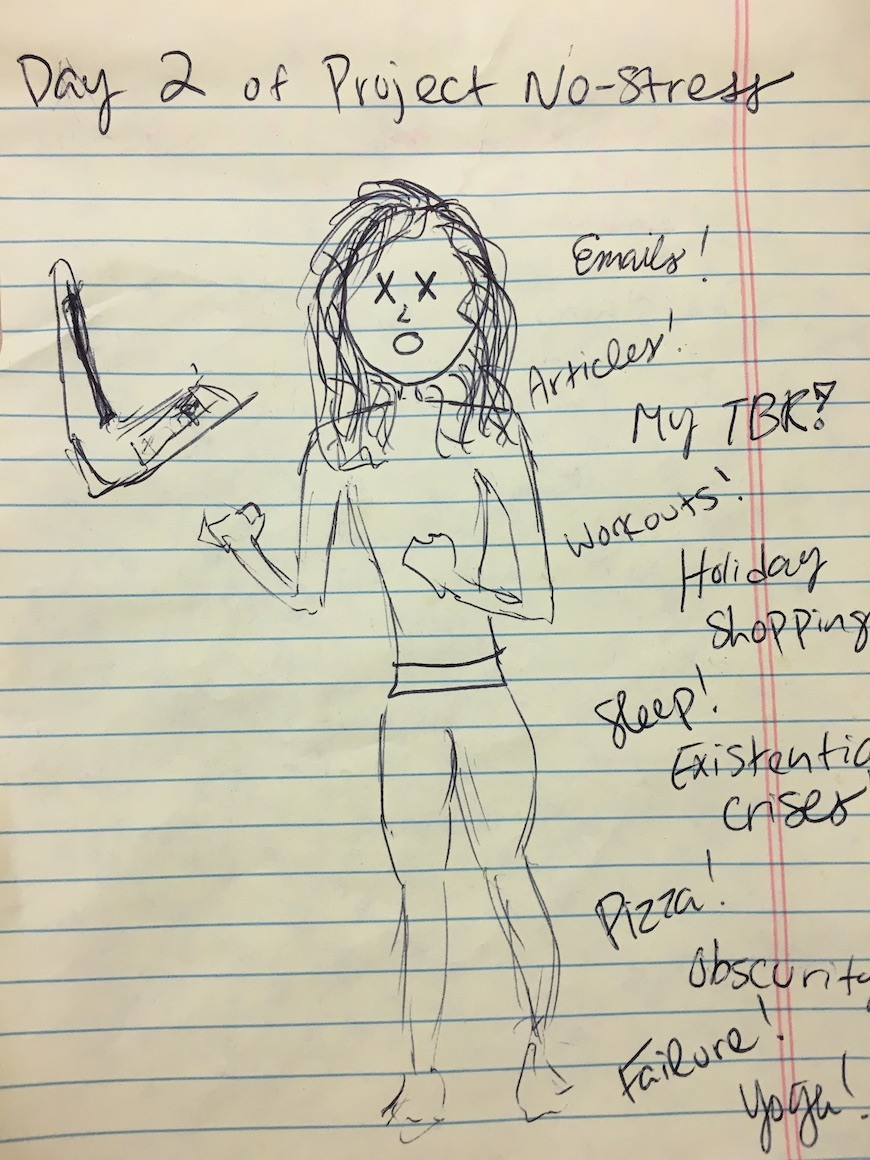After Scheduling Time to Worry in My Google Cal, I’m Like 50% More Zen
Despite my dubiousness, there is some science to back up the practice. For a 2012 study, 53 people with generalized anxiety disorder were split into two groups. Throughout two weeks, one group stuck to a normal worrying schedule (read: wherever, whenever), while the other set aside exactly 30 minutes per day for "focused worry" over the course of two weeks. And surprise, surprise—the latter group experienced a reduced sense of worry, anxiety, and insomnia.
"Rather than ruminating (which involves dwelling on the problem), you'll be more likely to look for a solution when you know there's a clear time limit to how much time you can spend thinking about an issue." —Amy Morin, psychotherapist
But why does it actually work? According to psychotherapist Amy Morin, LCSW, it's all about providing your worry a timeframe in which it can actually be productive. "Rather than ruminating (which involves dwelling on the problem), you'll be more likely to look for a solution when you know there's a clear time limit to how much time you can spend thinking about an issue," she tells Inc. Otherwise, that thing you forgot to do that morning, and the deadline you have for work, and the secondhand trauma of the news cycle form an infinite loop in your brain.
Learning to confine my Eeyore-esque tendencies to one sliver of the day felt like a pretty sweet deal to me. So calling on my GoogleCal, I set aside 15 minutes over three days to just worry. (I know, I know, that's too short—but 30 just didn't seem manageable yet). Would I magically turn into Bob Marley, living and breathing the notion that everything is gonna be alright? Here's what happened.
Day 1: Journaling my worry
To save myself from staring into space, I decide to conduct a stream-of-consciousness worry sesh straight onto the notepad on my desk. I worry about everything during this time, like how my body looks and how "successful" I am as a human being. Nothing was off limits in my worry vacuum. Some of my written insights include, "I'm worried that this story on worrying won't be good enough." "Wow, feels pretty weird to assign myself to worry when I could spend this time completing a real task." And my personal favorite: "I'm worried about the arc of my life." (LOL.)

{{post.sponsorText}}
Day 2: Doodling myself worrying
On day two, I start to notice a pattern of my thought process. First, I find a flaw about myself (like, my inability to draw hands or feet, for instance). Then, I attach a qualitative meaning to it that turns into a worry. So now the story is: "I can't draw hands or feet, and I'm worried the entire internet will laugh at me, and I wish I were better." But somehow, observing the Kells doodle spewing out my concerns did add a lightness to my worries. And that's a lightness I really, really need. I mean, just look at her! She's doing the best that she can!

(In case you can't tell, that poorly-rendered, floating object is my computer, which probably spawns 95 percent of all my worries.)
Day 3: matching my worries to instances of pop-culture worry that turned out okay
On day three, I decide to turn to pop culture for my 15 minutes of worrying. The rules go like this: I think of something I'm currently worried about, then I compare it to a similar situation in pop culture that had a happy ending. Today, my mind is clinging to the fact that I'm single. And the worry that follows is that I'll be single forever (and ever, and ever). For some, that may not be a worry. But it is for me.
Commencing step two, I call to mind some badass single characters. And you guys, it's harder than you'd assume to land on anyone! Finally, I think of Dustin from Stranger Things, and how no one wants to dance with him at the Snowball (still crying about that, BTW). But I realized that even though Dustin has no one to shuffle around with to the tunes of the '80s, his life is adventurous, cool, fun, and worthy. He helped saved the known world from being swallowed up by The Upside Down!
No, the whole thought process doesn't solve the loneliness issue. But it does remind me that for every worry I have, there's another part of myself that I'm undervaluing. I've come to call this "The Dustin Effect" in my mind. And now, every day from 2 until 2:15 p.m., I have a calendar hold for "Dustin."
If you're not sure how to distinguish between stress and anxiety, here's your 101. And check out these stress-relief tips for these crazy time we're living in.
Loading More Posts...